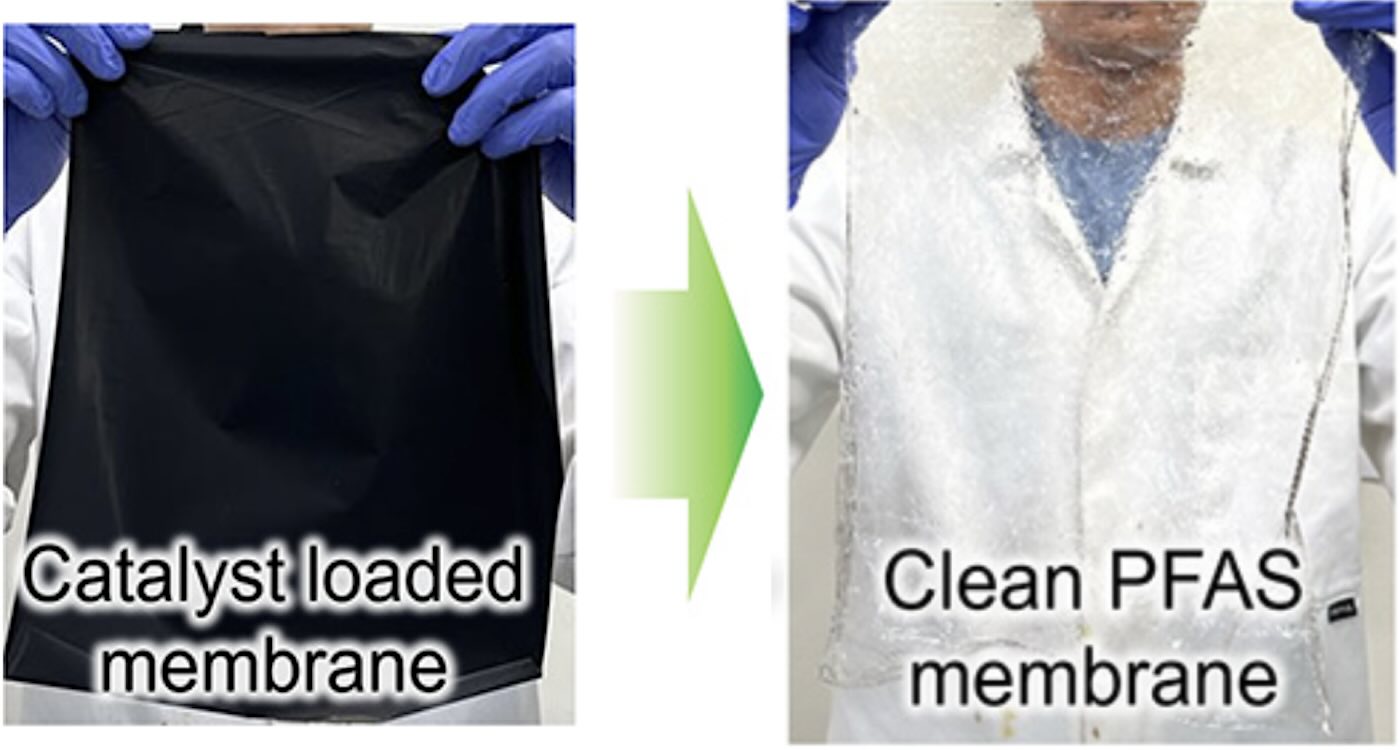Innovative Sound Wave Technique Revolutionizes Fuel Cell Recycling to Prevent PFAS Contamination
Key Ideas
- Researchers at the University of Leicester in England have developed a sound wave technique to efficiently separate valuable catalyst materials from PFAS membranes in fuel cell recycling.
- The innovative method, which uses organic solvent soaking and ultra-sonication, revolutionizes recycling by preventing harmful chemicals from leaching into the environment.
- This breakthrough in fuel cell recycling not only addresses critical environmental challenges posed by PFAS but also contributes to the circular economy by enabling efficient and sustainable recycling of clean energy components.
- Collaboration with Johnson Matthey in the development of high-intensity ultrasound to separate catalyst-loaded membranes has paved the way for widespread adoption, making the process both sustainable and economically viable.
Researchers at the University of Leicester in England have achieved a major milestone in fuel cell recycling by developing a new technique that uses sound waves to efficiently separate valuable catalyst materials from fluorinated polymer membranes (PFAS). PFAS, known as 'forever chemicals,' have serious health implications and are notorious for contaminating drinking water. The strong adhesion between catalyst layers and PFAS membranes has historically made recycling difficult. The new scalable method employs organic solvent soaking and ultra-sonication to effectively separate these materials, revolutionizing the recycling process.
Dr. Jake Yang, from the University's chemistry department, highlighted the simplicity and scalability of the method, emphasizing that it allows for the separation of PFAS membranes from precious metals without the use of harsh chemicals. This breakthrough not only addresses critical environmental challenges but also contributes to the circular economy of platinum group metals used in fuel cells, making clean energy technology more economically viable.
In a follow-up study, a continuous delamination process was introduced, utilizing a custom-made blade sonotrode with high frequency ultrasound to split the membranes and accelerate recycling. The process, developed in collaboration with Johnson Matthey, creates bubbles that collapse under high pressure, enabling the separation of precious catalysts in seconds at room temperature. The innovative technique has been praised for its sustainability and economic viability, paving the way for widespread adoption in the industry.
As fuel cell demand continues to rise, this groundbreaking advancement in fuel cell recycling not only ensures the efficient reuse of clean energy components but also helps address future environmental challenges proactively. By enabling the circular economy for precious metals, the new technique plays a crucial role in mitigating the environmental impact of fuel cell technology and promoting sustainability in the energy sector.
Topics
Power
Clean Energy
Environmental Sustainability
Circular Economy
Recycling
Platinum Group Metals
Technology Breakthrough
Latest News
